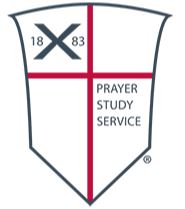 Prior to 2015 the men’s ministry program through the Brotherhood of St. Andrew was the best kept secret in the church. The Great Recession, doctrinal disagreements, the social media explosion and an aging membership population provided an impetus for a do-or-die scenario. Change is difficult enough in the business world. In the nonprofit it is worse because most dedicated souls are volunteers. The men’s ministry program has been around since 1883. We represented the laity in the early years with our evangelism centered around prayer and Bible study. We were passing out Bibles in hotel rooms way before the Gideons even thought of it. We were responsible for today’s Lay Reader program. Moreover, we even put the resolution for the Daughters of the King establishment before the General Convention in 1886.
Prior to 2015 the men’s ministry program through the Brotherhood of St. Andrew was the best kept secret in the church. The Great Recession, doctrinal disagreements, the social media explosion and an aging membership population provided an impetus for a do-or-die scenario. Change is difficult enough in the business world. In the nonprofit it is worse because most dedicated souls are volunteers. The men’s ministry program has been around since 1883. We represented the laity in the early years with our evangelism centered around prayer and Bible study. We were passing out Bibles in hotel rooms way before the Gideons even thought of it. We were responsible for today’s Lay Reader program. Moreover, we even put the resolution for the Daughters of the King establishment before the General Convention in 1886.
We were also responsible for missionaries in the 1890s that accelerated our growth into the Philippines, China, Japan and South Africa. From 1890 to 1900 chapters had been chartered in Canada, Great Britain, Australia, New Zealand, Panama, Scotland and Alaska. In the Nov. 30, 1900, annual report, the National Council announced that the Brotherhood had reached the 1,000 chapter milestone with 17,000 men in the ranks. We were incorporated by an act of the U.S. Congress, signed by (Brother) President Theodore Roosevelt, on May 30, 1908.
We were quite active in World War I, serving military bases and posts on the East Coast. We also welcomed the men home, taking care of them as they transitioned back into everyday life. We repeated these actions in some respects during WWII. After the war, the Men’s Ministry was responsible for creating the Kiyosato Educational Experiment Project (KEEP) in Japan; Faith Alive; Prayer, Evangelism, Worship and Service (PEWS) Action/Reconcilers for Christ; and the Forward Movement. In the period 1980 to 2010, men were active in extending their discipleship into the African continent.
A flurry of tornadoes, explosions, hurricanes and tsunamis meant ministry funds had to be diverted to emergency operations in the U.S. and Japan. But a larger concern became self-evident: The Brotherhood membership was getting older and, like the membership in the Episcopal Church, smaller. A long period of discernment was begun. The National Body organization was a clumsy top-down organization using 1950-’60s governing constitution for guidance. Several ideas were bantered back and forth but nothing seemed to be sticking.
Finally, Vice President for Field Operations Jeff Butcher convinced the Executive Board to undertake creating a statistical Benchmark Data matrix to see where we stood at that point in time. It was concluded: How can you develop a future plan if you don’t know from whence you are starting? This information was most revealing. It also paved the way for the first ever public opinion poll from the membership on how they felt about their men’s ministry program. Over 500 men responded to a Survey Monkey 24-question survey.
We discovered several distinct areas for improvement. Our programs should be useful at the local level and we need to focus on recruiting younger people. Our ministry thrives by seeking out bishop endorsement and realizing that one vote for every chapter allows for better budgeting and forward planning.
These findings were really taken to heart. Change was evident. We were like a U.S. Navy aircraft carrier that travels six miles in the Pacific Ocean before it can come to a complete stop. This was not going to happen overnight either.
Nowhere in the survey or in the responses was there a concern over International Chapter Building. Neither was there any reference to the orphanage in Uganda. This was a continuing problem throughout Br. Dennis’s term in office as the 28th national president. In the end, the cost/benefit ratio between staff and the orphans served had been tipped to an unacceptable level compared to industry standards. The senior leadership determined we needed to find a new partner who had local boots on the ground. The Chain Foundation, Texas, came forward and offered to let us merge with them, thus relieving the BStA of the financial burden that had become too much to bear. It was closed in 2015.
Dennis and Butcher together concluded that the benchmarking and Survey Monkey would serve as a guide for the Brotherhood’s 2015 Triennial Convention in Philadelphia. This National Council Meeting was built around a Ministry Fair concept. It comprised outside vendors, organizations (except Boy Scouts) and alliances nurtured during the last three years. It gave attendees a taste of what was relevant today in men’s ministry.
Based on the Survey Monkey findings, internal changes had to be made first. Vice presidents should have a presidential appointment over an election. Financial control and stability were next. The constitutional change for Phase I was passed. The incoming president could now appoint men for specific missions based on need in the local parish. The Foundation Trustee relationship was bylaw driven. That would take one more year to modify.
New leaders plus veterans comprised the Senior Leadership Team. Several key vice president position appointments took hold immediately. The elected leaders were Jeffrey K. Butcher, president; Jack Hanstein, senior VP for administration; Dr. Richard “Hoop” Hooper, National Council chairman; Robert Dennis, treasurer; and Charles Craven, secretary.
We began 2020 in the black financially with nearly 5,400 members in 462 chapters nationwide. Numerous plans were underway for further growth in 32 dioceses where there was not a men’s ministry currently.
One primary strategic plan element was the expansion for social media growth using Facebook, Zoom meeting formats, webinars, podcasts, Twitter and Instagram. All of these activities were in various stages of solidifying and implementing on March 1, 2020.
Province VII and Province III were holding monthly Zoom meetings with senior leadership team members in their respective areas of responsibility. Province II was hosting quarterly free conference calling sessions for their leaders. The goal was to have every province conducting such gatherings before year’s end, 2021.
By April 1 it became evident that the quarantines were going to be around for quite some time into the summer. The early adopters of new ideas and meeting formats immediately went about setting up weekly Zoom meetings, which the parish, chapter or an individual offered to cover the costs.
The 25-member Executive Board, who had been holding Zoom meetings monthly, took an inventory to discover the board had six subscriptions for hosts. An ad hoc committee was formed to develop immediate plans to assist parishes who were wanting to maintain communications. Suddenly the national president, senior VP for administration and executive director could all be present at a local chapter virtually –another significant milestone for the men’s ministry history.
Meanwhile, the national president sent out a constant contact email to all chapter officers. “Brothers and Sisters: This is a most challenging period we are all facing together. We must realize in our community we are never alone. One way for us to reinforce this fact is to create a Brotherhood Phone Tree for your chapter. Moreover, you might even include non-BStA members, too. Can you imagine the sense of unity this might create in the men’s ministry community at your parish?”
In this same message, a midweek prayer time on Wednesdays at 11:45 a.m. was put forward for the Brothers Andrew network. Men were asked to pause individually to offer silent prayers and intercessions for clergy, health care providers, first responders, sick and quarantined, and the grieving. Concurrently, a separate national line was added. Moreover, members were encouraged to email info@brothersandrew.net as another way to provide information on those who have been infected and/or who have died due to this terrible invisible enemy.
Community service work continued throughout this period with appropriate physical distancing and masks. Five parishes in the Phoenix area partnered with the U.S. Vets on a rotational basis every Friday to feed 100 vets. Other locations are in Arizona (one); California (four); Houston and Hawaii (two each); Las Vegas; Washington, D.C., and Guam.
Atlanta Brotherhood members at St. Peter and St. Paul have three different feeding programs for homeless, families and addicts in recovery. These include “Must Ministries,” “Extension,” and “Hope for the Hungry,” according to Tom Martin, team member.
Rocklin, Calif. continues doing online fundraising for feeding ministries. Dick Griffith, Villages, Fla., commented that St. George Parish had to stop serving food in their parish hall due to the COVID-19 virus. However, they continued to keep the kitchen open and packaged the dinners to go. A week later the supply of food dried up. Dick reported, “We had to temporarily close the ministry. In early May, our regular food sources and some new sources started providing food. It is harvest time and they had no market. They have provided tons of fresh produce.”
Every Saturday morning, we make up family boxes of food and hand them out as the needy drive through our parking lot. The number of families has been increasing each week. Last Saturday (May 30, 2020) they provided food to over 340 families.
Visiting prisons this time around has been nonexistent, according to the Dr. Ed Davis, national VP for Restorative Justice [Prison Ministry] in Texas.
The men’s ministry community is supporting local efforts to find those who need help all over the country despite some of the complications they have been facing. These simple acts of kindness are typical in each of the seven primary missions the Brotherhood is using today to all those who need a helping hand of hope, love and nurturing in every way possible.
by Jeffrey K. Butcher—National President, and Thomas A. Welch, executive director

